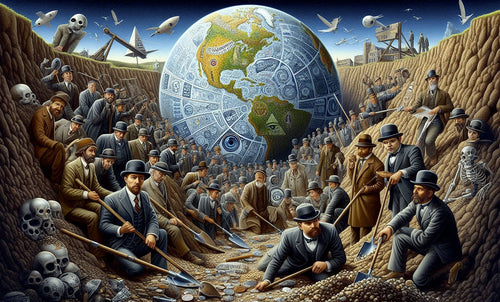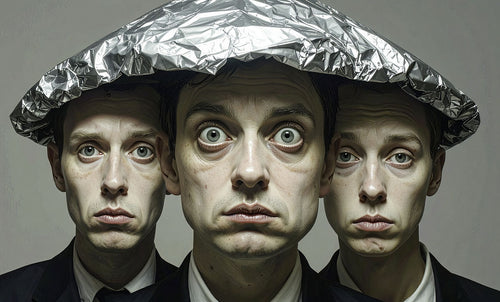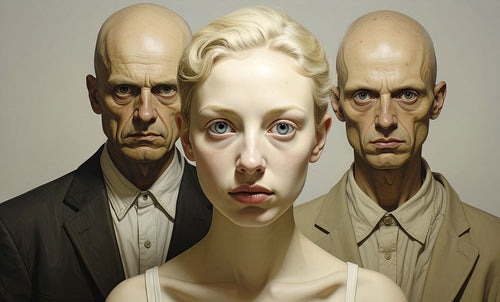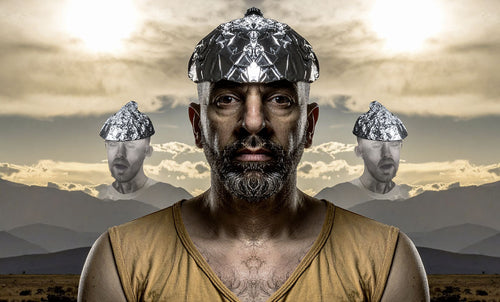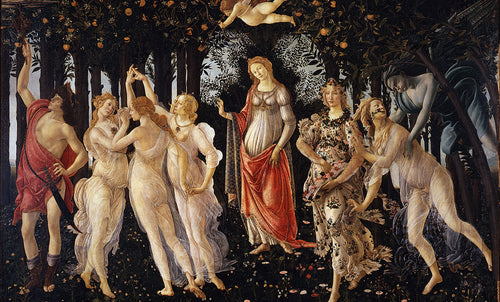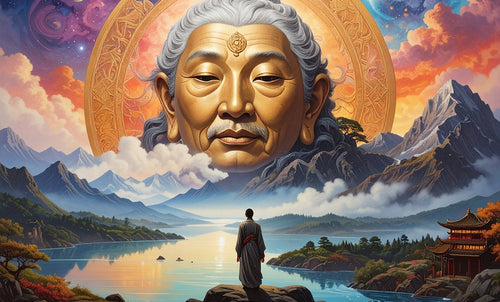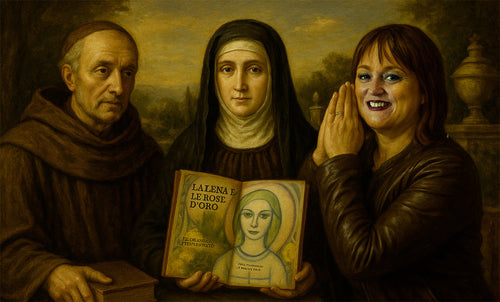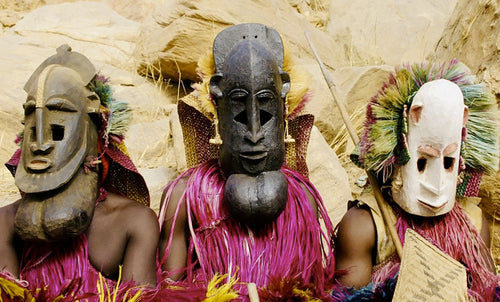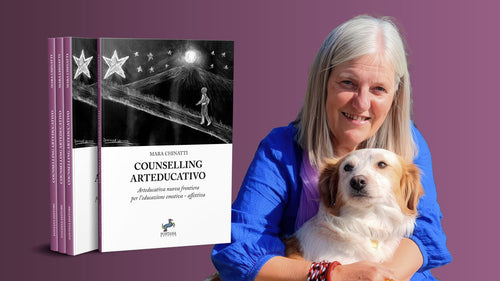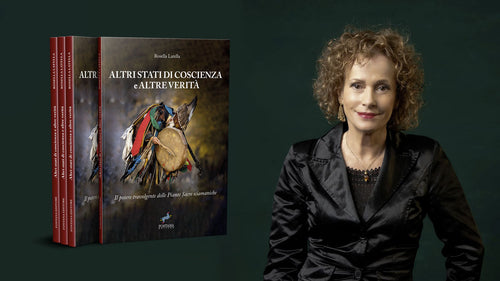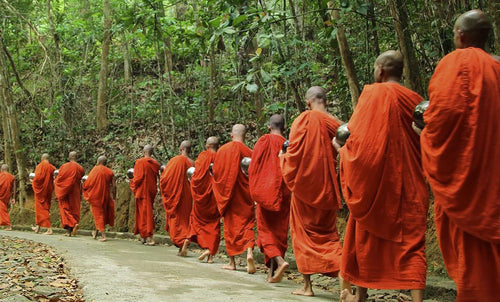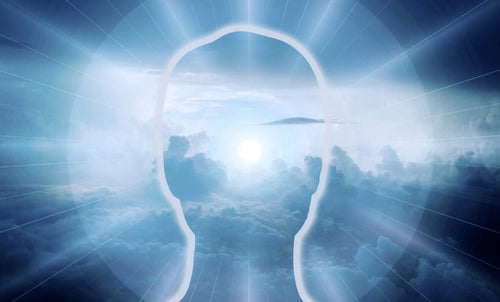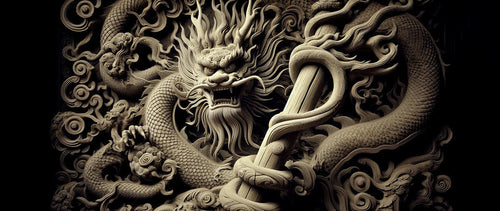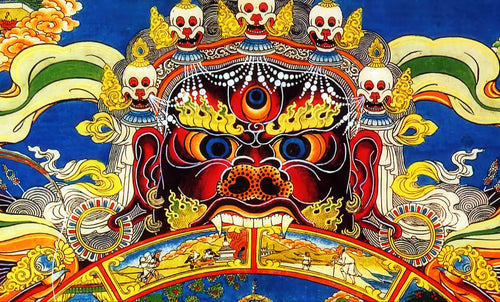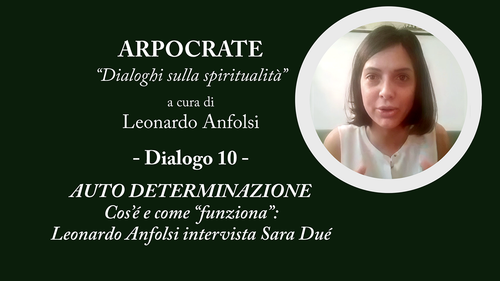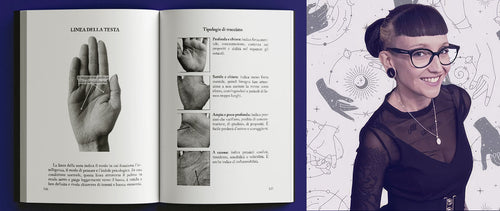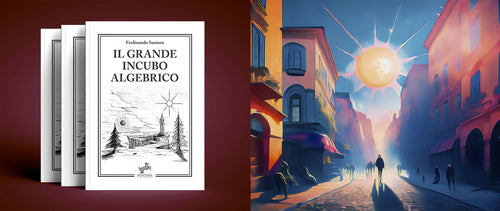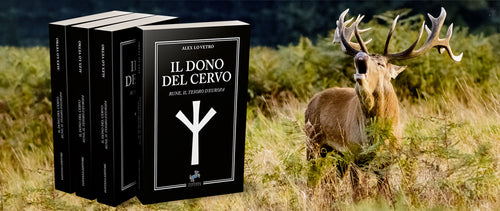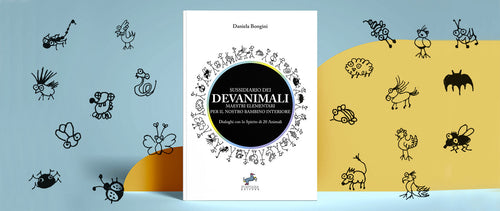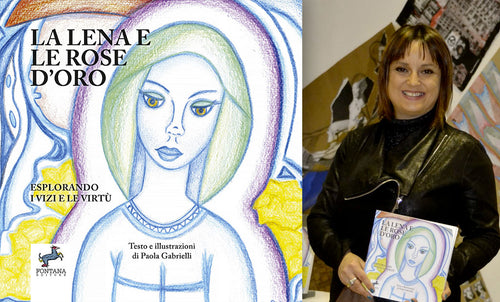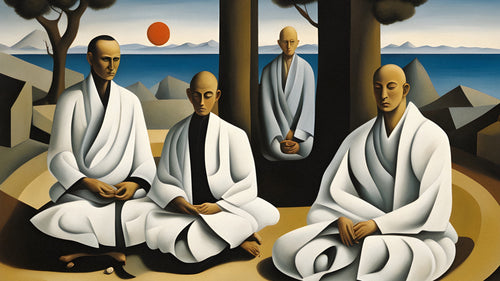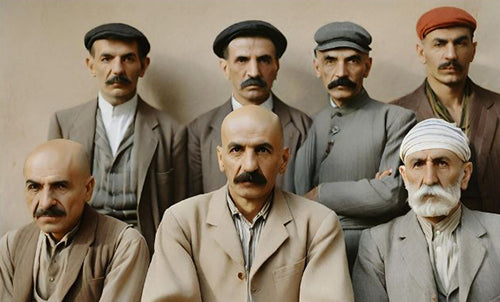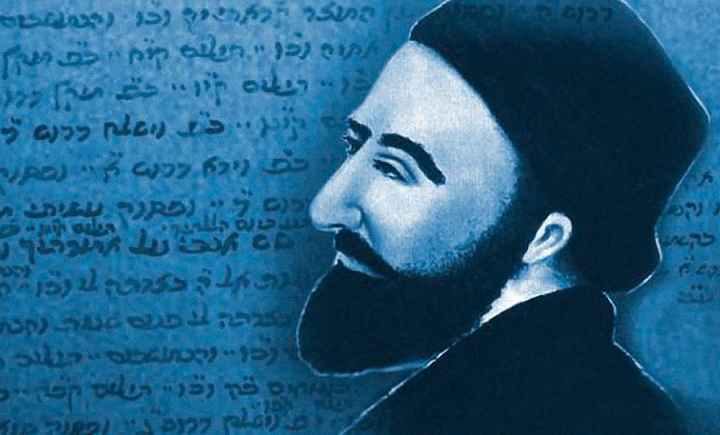
Jewish Kabbalah and the Epicurus Paradox - part 6
Fabrizio Piola
Let us resume the discussion that we have already carried forward in the previous 5 Parts, that is, the solution given by the Jewish Kabbalah to the Problem of evil and to the impertinence of Epicurus and his divine Paradox.
I long to introduce you to a figure as mysterious as he is extraordinary, a man who lived as a spirit fallen from the Heavens, almost alien to the Earth. He was, and still is, the greatest Kabbalist of all time. After him, nothing in the Jewish and Kabbalistic world remained as before. We are about to speak of יִצְחָק בן שלמה לוּרְיָא אשכנזי: Isaac ben Solomon Ashkenazi Luria (whose Hebrew acronym is אר''י / AR”I) also called Ha'ARI, Ha'ARI Hakadosh (The Holy AR”I) and also ARIZaL (The AR”I of blessed memory).

Isaac ben Solomon Luria was born in Jerusalem, then a sleepy provincial city of the Ottoman Empire, to an Ashkenazi father and a Sephardic mother on an unknown date in 1534.
Little Isaac almost never knew his father because he died when the AR”I was still very young.
Sefer HaKavanot U'Ma'aseh Nissim contains an anecdote, produced by popular devotional folklore, which tells us that one day, when Shlomo (Solomon) Luria was left alone in the Synagogue to study, Eliyahu HaNavi (The Prophet Elijah) himself appeared to him and said, "I have been sent to you by the Almighty to give you news that your wife will conceive and give birth to a son, whom you must name Yitzchak (Isaac). He will begin the liberation of Israel from the Qliphot ("Shells", forces of Evil) and through him many souls will be able to achieve their Tikkun (Rectification). He is also destined to reveal many of the most secret mysteries of the Torah and to explain the meaning of the Zohar. His fame will spread throughout the world. Therefore, be very careful not to circumcise the child before my arrival, because I will be his Sendak (the one who holds the child while the brit milah is performed on him).
After Shlomo's passing, it was a rich uncle, Mordechai, his brother and tax collector in the city of Cairo on behalf of the Ottoman Mamluk Administration, who took him under his tutelage and took charge of his education. Uncle Mordechai in fact entrusted him to the best rabbinical schools in the Egyptian capital, such as the one directed by Rabbi David Bin Zimrah, and soon the little Isaac showed that he was making rapid progress and was capable of applying himself with great diligence. In particular, the master Rabbi Bezaleel Ashkenazi decided to follow him personally and soon his progress in the study of the Talmud earned him fame and admiration in the Yeshiva.
According to the custom of the time, Isaac, who was then only 15 years old, was given as a wife a cousin with sufficient means to guarantee the material well-being of the new family, so that Isaac was able to return directly to devoting himself exclusively to his studies.
At the age of 22, AR”I decided to devote himself entirely to the study of the Zohar, which in the meantime had been printed for the first time in Italy, in Fano in 1559. The study absorbed him completely.
He then decided to adopt the life of a perfect hermit. He took his family further south, along the Nile, to what was the ancient city of Elephantine. He built a hut on a small island in the middle of the Nile and spent his days in meditation and prayer until the Sabbath was imminent, when Isaac would return home in a rowboat to spend the day of rest with his family. However, his family said that he spoke very little and that little only in Hebrew, even though everyone around him spoke Arabic.
This life stripped of all worldly materiality ended up, as was predictable, producing its effects on the psyche of the AR”I, a man already endowed by nature at birth with a vivid imaginative capacity. Already an ascetic, he became a visionary.
In Jewish tradition, Tzadikim are often people who are believed or who openly declare themselves to be in regular contact with supernatural presences, who advise and assist them and with whom the tzadik could weave endless dialogues made up of increasingly complex questions that intertwine and chase each other in the rarefied territories at the limits of the possibilities of thought. These presences, with all their mystical properties, are summarized in the Jewish notion of MAGGID.
None other than the Prophet Elijah himself, as was the case with Isaac - according to the legendary account of his birth - when he was a newborn infant undergoing the brit milah, manifested himself to the AR”I as a Maggid and his initiator and Master in the most secret and sublime doctrines of the Kabbalah. During the family Shabbat, Isaac Luria used to mention that, whenever he fell asleep in the shed, his Soul (Neshamah) ascended to heaven to join Elijah and discuss with him and with the great teachers of the past, such as Rabbi Akiva, Rabbi Hillel and Rabbi Shimon Bar Yochai, this or that aspect of the sacred doctrines.
But this feverish and visionary life completely out of touch with the world and contemporary human relationships, began to undermine the AR”I in the physical. Cultivating his dream of beginning to pass on his revolutionary spiritual discoveries to a community of initiated Kabbalists, at the age of 35, in 1569, Isaac Luria managed to return to Eretz Yisrael, going to settle in a small village in Galilee on the shores of Lake Kinneret, which the Romans called the Sea of Tiberias. The name of this place became legendary: Safed, today the Israeli village of Tzfat. He did indeed try to settle first in his native Jerusalem, but the rabbis of the major schools of the time, after hearing his theories, shook their heads and declared themselves unimpressed.
In Safed everything was different. A small community of mequbalim of the highest quality had gathered there from all over Eretz and the rest of the Diaspora, around spiritual leaders and fundamental Kabbalists such as Moshe Kordovero called the RAMAK the master of the sephirot, Solomon Alkabetz, the creator of the Ana Be Koach and the Leka Dodi, Yoseph Caro, the halachic jurist author of the Shulchan Aruch and other greats such as Moses Alshech, Elyahu de Vidas, Yoseph Hagiz, Elisha Galadoa, Moses Bassola. Among them the AR”I also found his main disciple and epigone, as well as biographer and transcriber of all his teachings from the Safed phase (the AR”I never wrote anything Kabbalistic of his own), the slightly younger Rabbi Hayim Vital Kalabrese, an Italian Kabbalist. One could almost venture to see it this way: Jerusalem was the seat, so to speak, of the Academy, while Safed was where the Avant-garde gathered.
The members of the community lived ascetically, each immersed in their own work until Friday, when they met to confess, each to another companion, the sins they believed they had committed during the week, before celebrating, together, the Shabbat dinner.
Isaac Luria arrived in Safed just in time to be, in all likelihood, if only for a few intense weeks, a student of the greatest master of Kabbalah of that time, the RAMAK. The important Egyptian chronicler Joseph Sambari in the 18th century specifically wrote that the Kordovero was "the teacher of the AR"I for a short time." Possibly in fact, if Luria arrived in the early weeks of 1570, he was then able to frequent the Ramak until the latter's death on the 23rd of Tammuz (June 27) of that year. It seemed like a sign of fate. The community, bereft of its prestigious leader, almost immediately looked to Isaac Luria as the only worthy successor. And the AR"I accepted.
As dean of Safed, Luria had two kinds of students: the Novices, for whose benefit the basic concepts of Kabbalah had to be gradually introduced, and the Initiates, who had the good fortune, during the three years the AR”I spent with them, to become the custodians of the secret teachings and formulas of Kabbalah ma’asit, for the invocations and incantations involving the 72 malakim of the shemhamphorash. Ḥayim Vital Kalabrese, who according to Luria was in possession of an absolute soul derived immediately from the very substance of the Creator without passing through Adam, feverishly transcribed, tirelessly edited, and accompanied him on several memorable excursions to Eretz Yisrael. On one of these, Luria and Kalabrese visited the until-then-lost tomb of Shimon Bar Yochai, author of the Zohar. Luria declared that he recognized it as such because it had been shown to him in an astral journey in an ecstatic state by his Maggid, the Prophet Elijah. The same one also indicated to Luria the current Kotel as the only true vestige of the Second Temple. What in the following centuries would become the most sacred center of faith and desire of all the Israelites in the world is such because Luria declared it as such on the basis of his mystical vision. (It being understood that the First and Second Temples were actually, and in an archaeologically documented way, monumental cult complexes built there, on the overlying esplanade of the hill of Zion).
In Safed Luria taught his revolutionary Kabbalah, Lurianic Kabbalah, and his circle of mystics soon came to be seen as a unique and unparalleled congregation, both in Kabbalah and in Judaism. The beauty and disruptive force of those doctrines, their ability to bring about a true Copernican revolution on issues such as Jewish identity, the reasons for the diaspora and exile, the great task and future glory of the People of Israel, meant that within a few years the Kabbalah of the AR”I was recognized as the Supreme Kabbalistic Mysticism, so much so that it influenced almost every aspect of Judaism, including prayers, rituals and religious ceremonies. On the eve of the Sabbath the AR”I used to wear a special White robe with four parts, which symbolized the four sacred letters of the Ineffable Name. His disciples soon came to consider him a saint, capable of knowing their every thought and performing all sorts of miracles. It would seem that in the end, in his last months, Luria himself came to see himself as the Minor Messiah, the Mashiach ben Yoseph, the immediate precursor of the Mashiach ben David, expected to lead the World into the Age of Olam ha Ba. The AR”I died in Safed at the age of only 38 on August 5, 1572, and is still buried in the local cemetery. His tomb has been and still is the object of the tireless devotion of thousands of pilgrims of the Israelite religion, many of them Orthodox and Hasidim from Israel and from all over the world.
THE LURIANIC SYSTEM AND THE PROBLEM OF EVIL

The AR”I wrote only a few mystical poems in Aramaic for Shabbat services during his lifetime. His teaching was oral, a common characteristic of traditional esoteric and metaphysical doctrines originating in the Ancient World. Thus, the true writer who transmitted the Lurianic system to us was, so to speak, Luria’s ghostwriter, his faithful and gifted disciple Hayim Vital. Thanks to his tireless work, the 6 monumental volumes of the Etz Ḥayim (Tree of Life) were published, the main work that collects the thoughts of his Master. During his lifetime, Luria made his disciples swear that not a single copy of the EH would ever leave Eretz Yisrael. The secret circulation of the text, still only in manuscript, was maintained until 1772, when it was printed in Zolkiev, Ukraine by a certain Satanow. The Jewish world was overwhelmed by it and the success of Luria's thought has since then been stable, lasting and intense, so much so that it has also influenced the rites and doctrines of "mainstream" non-Kabbalistic Orthodox Judaism.
But what did his famous system consist of in summary?
Personally, in many years of Kabbalistic studies I have not come across a more effective and concise synthesis than the one – unpublished in Italy – created by Dr. Sanford L. Drob that I want to report here in its entirety translated by me from his text “Symbols of the Kabbala – Philosophical and Psychological Perspectives”, Jason Aronson Inc. Publisher, Nortvale NJ & Jerusalem, 2000, pp.18-19
Here it is:
Table 1-2
The Lurianic System
Ein Sof (which coincides with the Infinite Head), of which Nothing can be said…
It is the Union of Being and Nothingness, or "of everything and its opposite" and
…causes the Tzimzum Contraction
(Concealment of the Divine, Contraction, Withdrawal, etc.) which
leads to…
Tehiru (the Metaphysical Void understood as No-thing), a Circle completely surrounded by Ein Sof, which contains within itself a Residue (Reshimu) of Divine Light, and within which emanate from the Point (Kutz of the Yud of the Tetragrammaton)…
The Light of Infinity (Or Ein Sof) and a very thin line (ray) (Qav)…
…within which the Primordial Man (Adam Qadmon) spontaneously emerges and manifests himself.
The divine Lights, also conceivable in the form of Signs / Letters (Otiot), emerge flashing and gathering in three emissions respectively from….
The Eyes, Nose, Mouth and Ears of Adam Qadmon taking on the circular and dynamic shape of Vessels (KELIM) with which to collect the light of the Qav, and in turn forming in this way….
The World of Points (Olam HaNekudim) populated by the presence of
SEFIROT (hypostasis of Divinity in its entirety filtered through the Archetypes of Values and Existence), which are positioned as vital and formative ganglia of the mystical body of Adam Qadmon (also known as Etz Hayim or Tree of Life)….
which in detail are known as….
KETER (Crown, Will, Delight Sefirah Supernal)
ḤOKHMAH (Intuition, Wisdom, Paternal Pole) and BINAH (Intelligence, Understanding, Maternal Pole)
ḤESED / GEDULLAH (Unconditional Love and Kindness) and TIPHERET / RACHAMIM (Beauty and Compassion) and GEVURAH / DIN (Strength and Justice)
NETZAḤ (Glory, Passion, Victory) and HOD (Splendour, Reason, Law of Nature)
YEDOD (foundation, unconscious, archetypal archive of forms)
MALKHUT / SHEKHìNAH (Kingdom, Sovereignty, Feminine Principle)…..
And which correspond to the Vessels composed in turn of Otiot Yesod (Foundation Letters) which are 22 and which are the channels of the Divine Word in turn divided, connected and articulated through the
WORLDS (OLAMOT) which are
ADAM QADMON (which in Luria seems to coincide with EinSof and Keter)
ATZILUT (Proximity)
BERI'YAH (Creation)
YETZIRAH (Formation)
A'SSIYAH (The Doing, material realization, lower world, Earth)
The weakness and lack of communication between the sefirot are reflected in the stability of the unitary structure of the Tree of Life, to the point of no return of this instability which produces the catastrophic event of….
SHEVIRAT HA KELIM (Breaking of the vessels) whereby only the first three are suitable for the descent of the Light into them because they are formed from a purer substance due to Proximity and remain intact, while the subsequent ones are gradually more and more shattered, incapable of containing and managing the Light poured into them, thus causing….
An interruption in the “conjugal” energy flow essential to create and maintain the Universe, occurring between the Masculine Aspects and the Feminine Aspects of the Divine itself….
And the LOSS (but not the loss) of 288 NITZOTZOT (SPARKS) (288 = gematria in mispar achrachi of Etz Ḥayim = the Divine Immanent) of Primary Divine Light, dispersed in the worlds below and fallen back to Earth…
…where they are trapped in Q(e)LIPOT (SHELLS or SCORIA) which go on to form the…
SITRA AḤRA (the Other Side) i.e. the dimension of evil and the absence of Light (darkness).
The “Breaking of the Vessels” = SHEVIRAT HA KELIM will be healed by the advent of the “Pact between the Intellects” = BRIT HA SEKHELIM (temurah, i.e. anagram in Hebrew of shevirat ha kelim), re-establishment of the flow with the virtuous reorganization of the sefirot and the rectified worlds.
The LIGHTS coming out from the FOREHEAD of ADAM QADMON….
...which Man knows as the MYSTIC NAMES OF DIVINITY are the forms charged with the management of energy in Creation by operating the complete repair of the Vessels, in the GARMENTS of
PARTZUFIM (Faces, Aspects, Personalities present in the Divinity)…
…and among them, present at all levels and worlds of the HISTALSHELUT (Concatenation of the manifestations of Being), the major ones are: ….
ATIKA QADDISHA (The Ancient Saint) > Keter
ABBA (Father) > Ḥokhmah
IMA (Mother) > Binah
ZEIR ANPIN (The Short Face (>ARICH ANPIN first three sefirot), the Young Face, the Impatient Son) > MIddot = Ḥesed, Gevurah, Tiferet, Netzaḥ, Hod, Yesod ….
NUKVAH / BAT (The Female, the Daughter) > Malkhut / Shekhìnah…
Whose interaction begins the REPAIR OF THE WORLD, the TIKKUN HA OLAM whose fulfillment is entrusted to Man, who must find the sparks and clean them (BIRUR HA NITZOTZOT) and return them to the divine Light by ELEVATING them through the fulfillment of the mitzvot….
…Tikkun whose completion allows for the REUNIFICATION OF THE PARTZUFIM, the reconciliation of the Masculine and the Feminine within the Divinity, the manifestation of the MASHIACH who will govern the Rectified World in the Perfect Age to Come (OLAM HA BA) which will last as long as it pleases HQBH, the Creator, Lord of the Universe (ADON OLAM).
THE DOCTRINE OF IBBUR (= impregnation of the soul) > REINCARNATION
According to the AR”I, in the very short time available in our life, a human being almost never manages to complete the work of rectification and the task assigned to him at conception by the Creator (AVODAT Ha SHEM) (cf. “Marpe Nefesh” “On the Purification of the Soul”, 1595). This means that after the dissolution of the temporary unity, constituted by our souls with our physical body, our divine spark to be rectified must return again to travel the time of a further earthly existence. In this case, this spark will impregnate the soul of a living human being, and in union with it, it will be able to remedy these duties of rectification that it had neglected in the previous life. For the same order of reasons related to the rectification of evil, the soul of a deceased person can manifest itself again in the worldly sphere to support a soul that considers itself too weak to face the task of Tikkun. According to Luria, this form of union of souls could be extended to a maximum of THREE SOULS simultaneously linked together and on condition that these souls are of a HOMOGENEOUS CHARACTER, that is, that they all originally emanate from the SAME ORGAN OF ADAM QADMON.
The DIASPORA of the Children of Israel among the peoples of the Earth (GOYIM = Gentiles) for Luria had the purpose of pursuing the overall salvation of all Humanity, Jews and non-Jews. The rectified souls of the Jews could join with the rectified souls of men belonging to other peoples in order to free them from the influence of the demonic forces of the Qlipot, until the total rectification of all Humanity. These salvific and virtuous unions could be oriented, and in part directed, by the Tzadikim through the use of prayers (Sefer Ha Kavannot, published in 1620 and Tikkunè Shabbat, 1624) and formulas of practical Kabbalah tending towards theurgy, achieved through forms of ceremonial magic. These arguments were collected and arranged by Hayim Vital in Luria's most enigmatic work known as Sefer Gilgulim (Book of Rotations, volume V of the Etz Chaym, 1784).
In many ways the intention of the AR”I, halted in its development by his premature death, to progressively replace Rabbinic Judaism with a Mystical Judaism emerged clearly. A whole corpus of ceremonies new or reinterpreted by Luria went to form the so-called "Shulḥan 'Aruk shel Ari." (published in 1680), which was probably Luria's realization of the dreams and teachings of his teacher in his very early youth, the mystic Rabbi David ibn Abi Zimra.
His masterpiece and greatest legacy is the ETZ HAYIM, a powerful treatise written by Hayim Vital in six volumes published in Korzec in 1784.
- "Oẓerot Ḥayyim," a collection of 21 Kabbalistic essays;
- "Sefer Derushim," biblical hermeneutics based on Kabbalistic doctrines;
- "Sefer Kavanot," mystical hermeneutics of the meaning and power of prayer;
- "Ṭa'ame ha-Miẓvot," a treatise on the interpretation of the 613 commandments;
- "Sefer ha-Gilgulim," a treatise on metempsychosis;
- "Sefer Liḳḳuṭim," a collection of miscellaneous Kabbalistic studies and teachings.
We can now more calmly, and with greater knowledge of the doctrinal foundations of Luria's thought, delve into the most interesting and innovative aspects of the problem we are investigating.
The Ari tells us that in the instant following the First Tzimtzum, the KAV – the first ray of light that contains within itself all the material and attributes of the worlds to be created – flashed into the Void and began to create the Worlds that we know. But this did not happen immediately, as we know. At the beginning the Creator would have put in place the necessary tests, which “materialized” only on a spiritual level, and which are known as the World or Worlds of Chaos or Tohu.
For a while such/such worlds existed until HaShem destroyed them to make room for the worlds known to us. It is already from this archaic and temporary level of reality that the system of Qliphot finds its origin and vital force.
The explanation of how this would have come about was told by the AR”I, as we have seen, in the narrative of the Shevirat haKelim or “Breaking of the Vessels,” a teaching which in turn was based on the midrashic statement in the Talnud that HQBH first created other worlds than this one and then destroyed them because they were defective and unsatisfactory.
The revelation of the existence of the World of Chaos was found by the AR”I in the sacred text itself: to be precise in Genesis 1:2
| ב וְהָאָרֶץ, הָיְתָה תֹהוּ וָבֹהוּ, וְחֹשֶׁךְ, עַל-פְּנֵי תְהוֹם; וְרוּחַ אֱלֹהִים, מְרַחֶפֶת עַל-פְּנֵי הַמָּיִם. | 2 Now the earth was unformed and void, and darkness was upon the face of the deep; and the spirit of God hovered over the face of the waters. |
In the phase following the Tzimtzum in which the Sephirot emerged to light, they were placed IN CIRCLE in the World of Chaos so that each one began to manifest itself in Being reflecting only and exclusively its essence and its nature as if this referred to a perfect entity in itself and in itself, without any interrelation or connection with the other surrounding sephirot. Ḥesed for example was there as a sort of Ḥesed in the absolute state, all structured and perfectly closed around its own essential “Ḥesedity”; and this without the prediction or the presence of any relationship with Geburah; and without any notion of the existence of Tiph'ret.
The Supreme Light that emanated directly from the very heart of the Supreme Being was therefore a very intense, concentrated and uncontrollable Pure Light called by the AR”I Orot Merubim. It therefore pervaded the world of Chaos and also ultimately those weak, separated, too limited and unaware vessels (Kelim Muatim or Weak Vessels) that could not possibly contain it. The result was the “Shattering of the Vessels”.
It is undeniable that probably in the eyes of HQBH, for an instant the World of Chaos manifested itself as a sublime spectacle of dazzling lights and phantasmagorical forms of unheard-of beauty and majestic power. But those Sephirot thus demonstrated that they were not up to the task.
Individual, egoistic, separate as they were, each one tried to grab all the Light for itself, unable to share and coexist with the others. The root of individuality and Ego is all here, in the Sephirot of the World of Chaos.
Such a world was a non sequitur to the divine plan for the unfolding of Creation. And so God destroyed it without hesitation.
In its place HQBH created the system that we know as our Universe, that world articulated on four functional levels, which Kabbalah calls the Universe of Correction (Tikkun or Tiqun), in which each Sephirah was arranged in an interrelated form and connected with the others. We reproduce this metaphysical reality, to conceive it, know it and communicate it with the graphic glyph called “Tree of Life”.
As our World of Correction, Ḥesed and Geburah are situated on an axis, or Way, that relates and connects them to each other. So, for example, in Ḥesed there is a part of Geburah, and in Geburah there is a part of Ḥesed. This is the Kabbalistic expression of the law of Polarity which we know to be one of the 7 fundamental laws of the Universe, as already established in the Corpus Hermeticum and which we have already discussed in connection with the so-called dialectic of the CHU”G, or the original complementary and necessary opposition between Chasadim and Gevurot.
So the fundamental characteristics of this Lurianic Universe destined to remain are three:
- The profound interrelationship between the hypostatic manifestations of the divine called Sephirot;
- The improved essence of each Sephirah, which has become “Sturdy Vessel”;
- The weaker and therefore more bearable nature of the Divine Light is called “Orot Muatim” (Weak Light)
This is a world that can sustain and channel the Light, articulating it on all planes and making it reach its multiple, graduated levels.
For a long time, Kabbalists questioned whether the current arrangement of the Sephirot was in a Circle (Igulim) or Linear (Yosher).
The vision that associated “Circle” with “Chaos” ultimately prevailed, so that “Linear” is equivalent to “Correction”.
In the first model the arrangement would have been according to concentric hierarchical circles, so that none had contact or participation with any of the others.
In the linear arrangement, however, the sefirot are arranged like the parts of the Human Body and this, now corresponding in similarity to those, is notoriously a single and unique organism in which survival depends on the cooperation in competition and on the division of functions, capacities and skills between the limbs and systems: the Head, the Arms, the Legs, the Torso, the Feet, etc. Starting from this metaphor, the philosopher Arthur Koestler in the 20th century developed, inspired by the model of the sefirot, the concept of a HOMEOSTATIC functioning HOLON.
But returning now to examine the terrible and fatal instant in which the Original Vessels shattered, the AR”I, as we have seen a little while ago, reveals to us that there were 288 sparks of light that fell outside the level of the Sephirot, and that precipitated to thus illuminate the lower levels in which they were incorporated.
In their precipitous descent they continued to break and subdivide into parts and particles that were ever smaller, ever coarser, and ever less luminous. Their individualistic origin and the egoistic choice that was “upstream” and the very cause of their existence, determined this progressive degradation as they multiplied, moving away from the Origin of the True Light.
The brightest and purest of those 288 sparks were retained within Atzilut who eventually assimilated them into himself.
The others later fell upon B'ryiah and Yetzirah, constituting the very few separate and individual, and therefore dark and potentially evil, elements that are present in those levels.
Finally the rougher fragments ended their descent into Assyiah and their vicissitudes finally gave rise to the Qliphot.
It goes without saying that the Hasidim - and some of them are open about it - believe that HQBH does nothing random or useless, much less wrong, as happens to Man who typically proceeds along the path of trial and error.
Therefore the PURPOSE of the creation of TOHU VAVOHU can only have been that of the creation and appropriate distribution of Evil, as an indispensable element for the possibility of the completion of the evolutionary process of the Correction of the Universe, which will bring back to the Creator at the end of days all its sparks and even the most infinitesimal fragments of these, enriched by the total and ultimate experience of every possible condition that can be experienced in the dimension of Matter, an experience that will be founded in the ineffable and infinite awareness that HQBH will acquire of Himself and of His Creation.
Through the activity of conscious rectification of Man, which is exercised first of all with the knowledge of himself and with the internal struggle to contrast his own Yetzer HaRa (inclination towards Evil), Man redeems the material world and releases the quantum of the Most Powerful Original Light of the Qav, proper to the World of Chaos, which lay hidden in the thing itself and derived from one of the Qelipot Nogah present in this world, upon which Man has decided to act in the spirit and intention of correction in the name of Gd.
This is why in Judaism Man cannot perhaps do anything more useful and noble than his own TESHUVAH, or Active Repentance, which starts from the recognition of Evil in himself and in things and continues with the will to correct this state of affairs to restore the QEDUSHA' in its place, so as to contribute to creating here on the Rectified Earth that dwelling place – the DIRAH BE TACHTONIM – worthy of the Most High who reconciles and reunites with his Shekhinah.
This is why YOM KIPPUR, the Day of Atonement, is the most awaited, the most sacred and the most powerful of all the days in the Jewish ritual calendar.
Some of these sparks have to wait for centuries and centuries or even endless millennia before a man relates to their material manifestation with the intention of using them for the Building of the Kingdom of Heaven. This task has been entrusted by Gd Himself to the only creature made in His image and likeness: Man. And this activity is called kabbalistically “BIRUR HA NITZOTZOT” or “Refining of the Sparks”, and it is one of the most sacred divine services that the righteous Man can perform.
The Final Refinement of this world will be accomplished kabbalistically only with the coming of the Meshiach and therefore on the final day of time, that of the Resurrection in which, as it is said in the Talmud, “G-d will remove the Spirit of Impurity from this World”.
At that time every Qelipah will disappear and everything will be part of the Qadushah. That time is called Shabbat, or “time of rest.”
The Shabbat that every week comes to close a seven-day cycle to open a new one is therefore an anticipation that HQBH has prescribed for man, so that he can begin to understand what will be the days of the earthly kingdom of the Meshiach. In relation to that future time, today we still live in a dimension that is that of the simple “weekday”, but which has been given to us so that we can use it to prepare ourselves for what will have to be on the table and in ourselves on the Final Shabbat, when all the work done in this very long today, which begins with Adam and includes everything our Fathers and all of us of today and tomorrow have done, said, thought, hoped and suffered, will have its meaning and its reward.
HQBH will then dwell among us and all of us, the living and the resurrected according to the AR”I will have the blessing of being able to be admitted to contemplate the glow of the Infinite Light illuminating His Holy Face.
To understand in depth and to be able to access in turn the planning level relating to how we in turn can contribute to the elimination of evil and the rectification of the World, we will take an anthropological, historical and cultural look at his doctrines and the developments that have derived from them.
HOW THE ARI CREATED A NEW MYTH AND FOREVER TRANSFORMED KABBALAH AND JUDAISM.
A myth that is incredibly still relevant today.
To limit ourselves to a look at the contemporary Jewish world, it is easy to note how, of all Lurianic Kabbalah, the expression Tikkun haOlam (Repair of the World) has remained especially current and very widespread in use - at a LAY level - which is often taken up as an expression, used as a synonym for synthesis, which refers to a whole wide series of actions based on the perception of the ethical and social value of maintaining the integrity of the ecological environment and of solidarity between human beings in a world that achieves social justice and therefore of the need for their recovery where these have been abused and damaged. Tikkun can be a concept today that can be approached to the themes taken up by no-global associations, movements for a fair and supportive economy, or those who aspire to the so-called "reasonable degrowth", or non-governmental ecological and humanitarian organizations of all kinds.
But is it really the same tikkun that obsessively pervades the ultra-Orthodox Ashkenazi and Sephardic Jews, or the pious and mystical Ḥassidim, the Haredim with their fur hats and white socks?
The approximately two-thirds of the population of the State of Israel who define themselves in various ways as “hilonim” or secular have almost no knowledge of the origin of this expression and of what complex theoretical conception it was part of. Nevertheless, what Isaac Luria created is simply the re-founding myth of modern mystical Judaism, a conceptual formulation that by reinterpreting the immense traditional material in which it was and still is rooted, marked a point of innovation so radical in Judaism that nothing could be considered as before, and with respect to which the Jews have lined up, giving rise to new and divergent conceptions of Judaism. And the entire Jewish world at every level has been influenced by it.
Yet the story of the creation of this myth and the circumstances of its unlikely diffusion is truly almost paradoxical, and still today makes it virally capable of generating new applications for the resolution of some of the greatest problems emerging from contemporary society.
The myth elaborated by Luria, placed at the center of the faith of many Jews over the last 5 centuries, is not found in the Torah, nor in the Tanakh, nor even in the Talmud or in other sacred texts. Yet it is precisely from these that Luria has drawn and recombined, in a form that has been able to be at the same time traditional and new, all the materials necessary to assemble the myth of the Breaking of the Vessels.
The Myth of the Broken Vessels
This is how the ARI introduces its story that will inevitably lead to the Shevirat Ha Kelim, the cosmic catastrophe that would determine the Creation and the characteristics of our current Universe.
“Ten Holy Vessels were brought into being, each filled to the brim with Primordial Light.”
As we know before the beginning of time, according to Luria, the Presence of HQBH filled the entire undifferentiated Whole in which He was the only entity, the only existing one. When the Will to create the Universe appears in Gd, it instantly becomes Act resulting in the creation, for the first time, of something that in some way is already “other”: the Empty Space from which Gd withdrew so that the World could exist. In order to contract, Gd withdrew his breath into himself, and the space thus created was therefore Darkness, filled with darkness without Light. And when Gd then said “Yhehì Or” “Let there be Light”, the light entered that space that was full of darkness and the Ten Vessels full of Primordial Light manifested themselves.
They could be imagined as a flotilla of Ten Ships floating on a Sea of darkness, each with its cargo of Light. If they had all arrived intact at their destination, saving all their cargo, then the World would have been perfect.
But these ships were different: some were more robust and better structured, and with adequate capacity. Others were more fragile, and loaded beyond their real capacity. And their cargo, far from being passive ballast, had suddenly revealed itself to be too heavy and too intense. So these latter ones shattered and from their torn hold countless Sparks of Primary Light (primary photons?) were scattered into the dark sea, like grains of sand, like seeds, like stars.
The sparks fell everywhere, but their greatest concentration ended up falling above what has been known for centuries as the Holy Land.
This is, according to the AR”I, why we were all created: to search for, find, collect and cleanse these Sparks. It does not matter how far they have hidden. And this task HQBH initially assigned to the 12 descendants of Jacob and to all their descendants. This also explains the reason for the numerous exiles and diasporas suffered by the Jewish People: to go and collect the sparks everywhere in the world and free them from their prison by sifting the earth at the four corners of the globe, those that on the Jewish prayer shawl (talit) are represented by the four long intertwined fringes placed at the corners called tzitzit.
And when the holy sparks have been found and accumulated in sufficient numbers, then the broken Vessels can be repaired and the Tkkun HaOlam, the Repair of the World, so long desired and awaited, can finally be said to have been realized.
The task of every Israelite is therefore to resurrect these sparks in full freedom, from wherever they have been imprisoned in matter, to raise them to renewed sanctity through the redeeming power of his own soul.
Mylkh trybs Mylksh tyr b
The explanation of the anagram is quite simple. Many years ago I remember reading a commentary by an American rabbi on Etz Chayim written by Hayim Vital. According to the author, there was a profound reason hidden behind the lexical choices of the AR”I.
Why call the image of the key event of his cosmology "shevirat ha kelim"? Why while in Western languages we speak of Paths and Ways (Way, Path) the ARI instead chose neither derekh nor nativ, but rather sekhel/sekhelim that is "intellect/intellects"? Because these choices make the anagram of Rectification possible so that the expert can understand the suggestion that the ARI has left us about the way to definitively repair the original rupture. In fact: "Shevirat ha Kelim" is remedied through the realization of the "Brit ha Sekhelim" or the "Pact between the Intellects". All Tzadikim must acquire the full awareness of being only apparently different and unique cells but of a single brain, the One Mind. The Pact that binds them inextricably is that of renouncing the limits of one's ego, each realizing the fullness of himself, so that each can be that indispensable note that flows, irreplaceable, in the perfect restored harmony of the Olam HaBa. It is therefore up to the Kabbalists to realize what AR”I prophesied almost five centuries ago.
Fabrizio Piola

